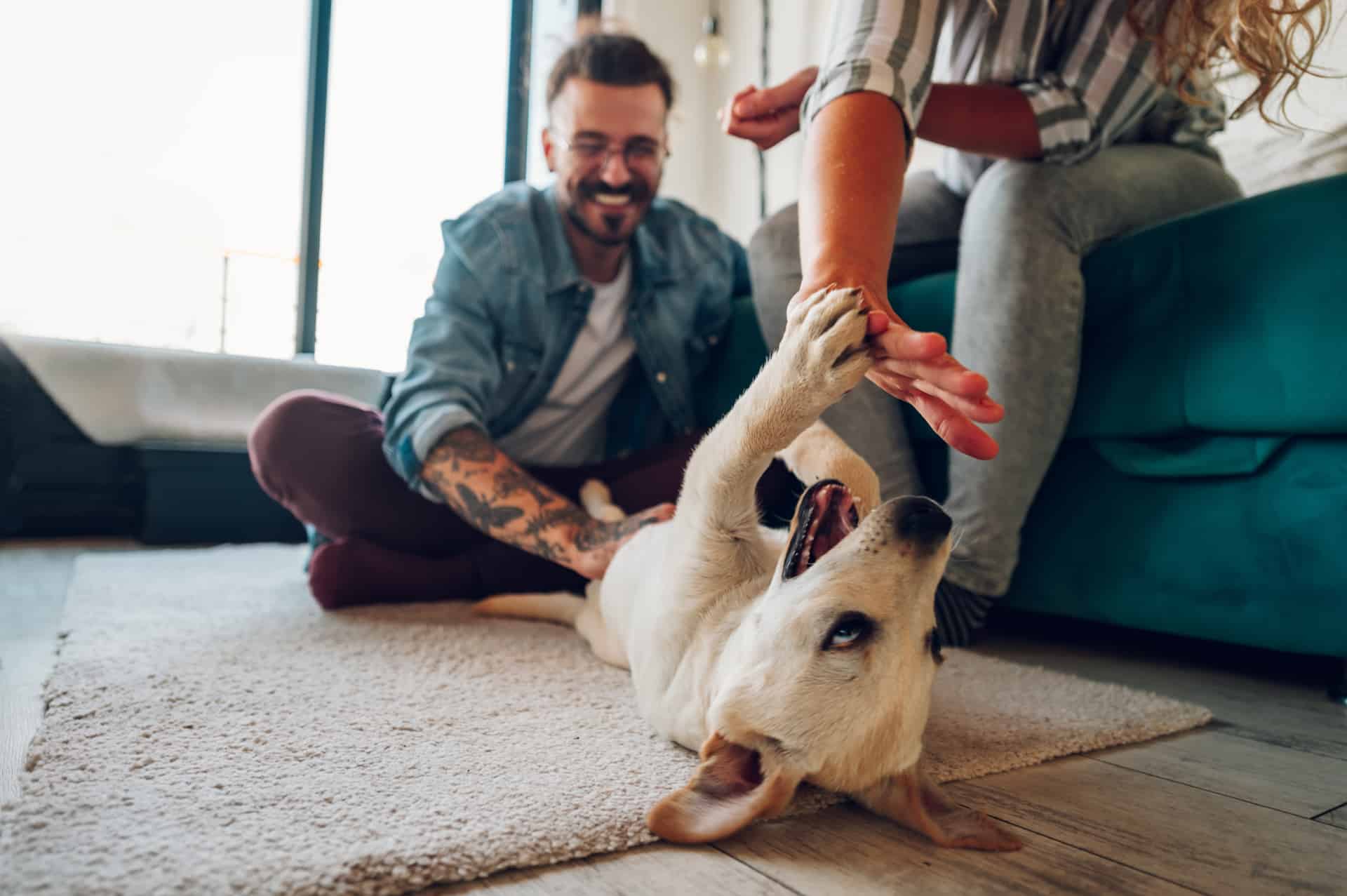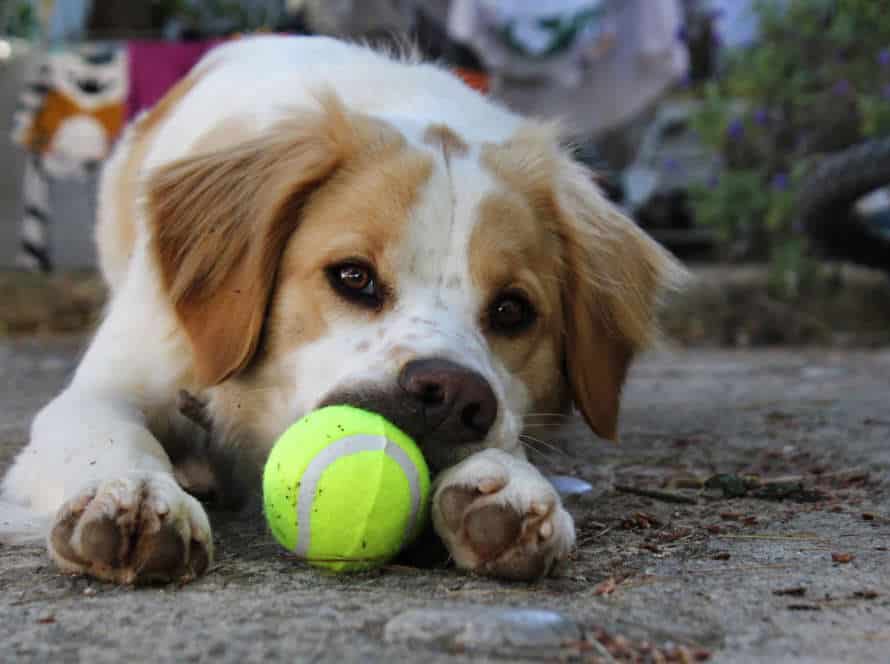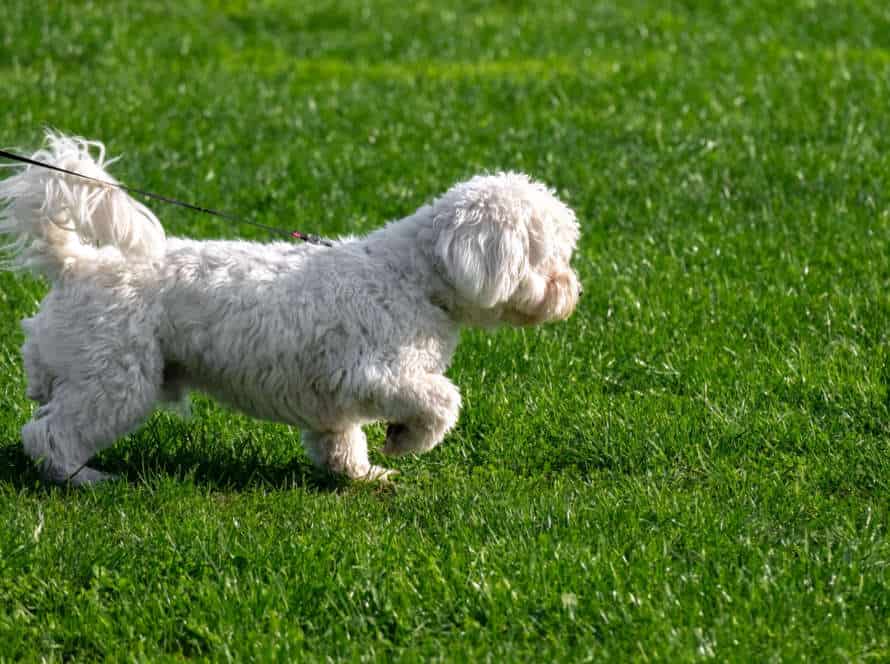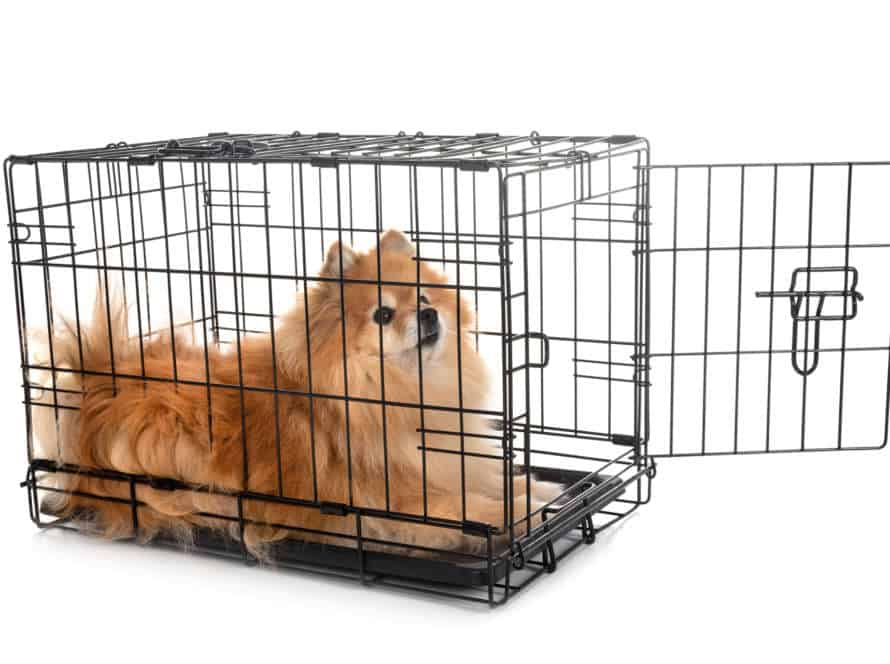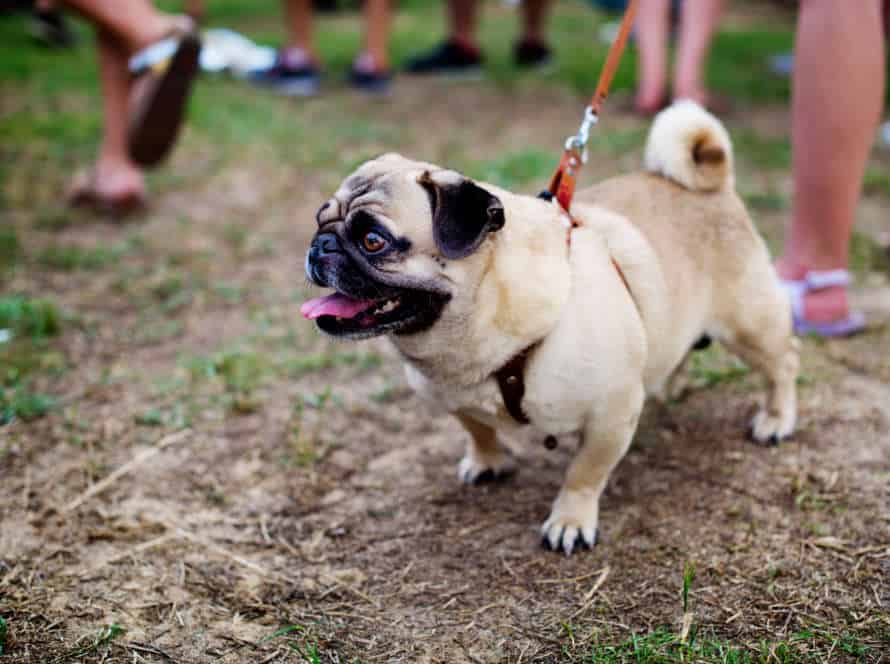How to Handle House Training Setbacks: Building Resilience in Your Dog
It’s regular for dogs to have hiccups in their house training. It’s vital to manage them in a way that builds resilience in your pup. Here are some tips:
- Find out the cause of the setback – Check if there is a medical issue, a change in routine, or lack of consistency in training.
- Go back to the basics – Crate train and teach basic commands.
- Praise and reward – Give your dog treats or playtime for good behavior.
- Stay consistent – Set regular feeding and walking times.
- Be patient – Remember it takes time and patience to train a dog. Setbacks are part of the process.
By handling setbacks with patience, consistency, and positive reinforcement, you can help your dog build resilience and succeed in house training. Pro tip: Get advice from a professional dog trainer.
Understanding House Training Setbacks
House training is a process. Progress can stop or even go backwards. This can be very discouraging for dog owners. It is important to stay strong and have the right help. Knowing why a setback happened is the first step to success and overcoming it.
Types of setbacks
When house-training your pup, you could experience two types of setbacks – behavioral or medical.
Behavioral setbacks could be caused by lack of consistency in training, changes in environment/routine or anxiety. Examples include peeing/pooping indoors, going outside and not eliminating, or eliminating in a certain spot inside.
Medical setbacks are due to underlying health issues, such as UTI or GI issues. Signs of medical setbacks include: frequent peeing/pooping, straining/crying while eliminating, blood in urine/stool, or fatigue/loss of appetite.
Pro Tip: To tackle these setbacks, stay patient and consistent with training and avoid punishments. If you think it’s a medical issue, consult your vet to rule out any health concerns.
Common causes of setbacks
Setbacks when house training are normal. To handle them and make your pup more resilient, learn the common causes.
- Inconsistent routine? Dogs love routine. Without it or changes in it, they get confused and have setbacks.
- Medical issues like UTI’s can cause accidents.
- Stressful events like moving can also lead to setbacks.
- Lack of supervision can let your pup have accidents and bad habits.
- Punishing for accidents makes them fearful and anxious, leading to more setbacks.
Knowing the common causes helps you create a routine, monitor health, and use positive reinforcement techniques.
Signs that your dog is experiencing a setback
House training your pup can be tough. But it’s key for forming a strong bond between you and your pet. Though, after training, now and then your dog may experience some setbacks. Here are some red flags:
- Indoor accidents: If your pup was trained but still has accidents in the house for no apparent reason, this is a sign of a setback.
- Barking, whining or pacing: If your pup whines, barks, or paces back and forth, it’s an indication of a setback. It means they’re anxious or nervous and need your help.
- Destructive behavior: Chewing furniture, digging up the yard, scratching floors, or biting could mean your pup has underlying anxiety, resentment, or confusion.
If you spot any of these signs, be patient and understanding. Try to figure out the cause of the setback, calm your pup, and reinforce the house training. Pro tip: Be consistent and patient in your training.
Approaches to Handling House Training Setbacks
House-training a pooch? Not the easiest task. But with patience and consistency, success awaits! Setbacks can seem discouraging, yet it’s essential to stay positive and persevere. In this article, check out the various approaches to tackling house training disappointments and bolstering your pup’s resilience!
Remain Calm and Patient
House training a pup can be tricky. Setbacks are just a part of the process. Stay calm and have patience to help your dog build resilience. Here are 3 tips to manage setbacks:
- Don’t punish your pup for accidents. Clean up the mess instead and keep training.
- Examine the training routine. Could inconsistent feeding times, lack of exercise, or inadequate potty breaks be contributing to the setback?
- Adapt the training to accommodate your pup’s specific needs and personality.
Remember, house training takes time, effort and patience. Celebrate each success with your pup, and keep striving for your goals.
Re-examine your Training Plan
Re-examine your training plan – if your pup is having problems with house training. Identify any weak spots, like frequency of potty breaks, rewarding good behaviour, or dealing with accidents. House training takes time and practice, and may have setbacks. Keep a positive outlook and be patient. Reinforce the routine, with regular feeding, playtime, and potty breaks. Make sure to reward good behaviour quickly. For extra help, consider talking to a professional dog trainer.
Consider the timing and frequency of toilet breaks
When house training your pup, timing and frequency of toilet breaks is essential. Here’s what to do:
- Set a steady schedule for your dog’s loo trips, keeping in mind their age, breed, and activity level. For example, a young pup may need to go out every hour, while an adult dog may only need to go every 4-6 hours.
- Watch your pooch’s behaviour and cues to see when they need to go out. Circling or sniffing could mean they need a break.
- Don’t punish accidents, rather reward good behaviour.
- Supervise your pup closely when they’re inside, confining them to a small area when you can’t watch them.
- Consider crate training or a designated outdoor area for your dog’s potty breaks.
With consistency and patience, you’ll be able to teach your pup to use the loo outside – no slip-ups!
Investigate whether changes to diet, routine or living situation are factors
Investigate if a change in diet, routine, or living situation is causing house training setbacks with your pup. Here are approaches to consider:
- Speak to a vet about best diet for pup’s age, weight, and breed. Is pup feeling discomfort? This can lead to accidents.
- Pups and seniors need more frequent potty breaks. Has their routine changed?
- Struggling with living situation? A positive reinforcement trainer or behaviorist can help.
Pro Tip: Stay patient, consistent, and calm. Reward progress and successes. Celebrate small victories on the way to success!
Consistency is Key
House-training a pup might be hard. Setbacks are normal. To handle them, stay consistent. It helps the dog adjust to the rules. Here are the steps:
- Follow a consistent routine. Feed and exercise them at the same time each day. Take them out regularly to do their business.
- Don’t punish them for accidents. It just makes them anxious and messes up trust.
- Reward them for good behavior. Praise them when they go in the right area.
- Monitor their behavior. Pay attention to their signals and redirect them if needed.
With patience and consistency, your pup will learn. They’ll develop resilience and understand the house-training rules.
Steering Clear of Corrections and Punishment
When it comes to house training, avoiding corrections and punishment is vital. To help maintain your dog’s confidence, use these positive reinforcement techniques:
- Be consistent with the same spot and schedule.
- Give treats and praise whenever they go outside.
- Supervise your pup and anticipate their needs. Take them out before they have an accident.
- Clean up any messes with enzymatic cleaner to get rid of odors that may attract them.
- Reward progress, no matter how small.
Remember, house training takes time and patience. With consistency and positive reinforcement, your pup can learn successful habits.
Reinforcement of Good Behaviors
Reinforcing good behaviors is key to making your dog resilient when it comes to house training. Here are two ways to reinforce good behaviors:
- Positive reinforcement: Give treats, verbal cues, or extra cuddles whenever your pup follows the right behavior during potty training, like going outside to do its business. This will motivate your pup to repeat the positive behavior.
- Consistency: To avoid setbacks and help your pup become resilient, stick to a consistent schedule for feeding, potty breaks, and training sessions. This will help your pup form a routine and understand what is expected of them, reducing the chance of accidents or confusion during house training.
Strategies for Building Resilience in Your Dog
Dealing with house training issues with your pup can be tricky. Knowing the significance of increasing resilience in your pup is paramount. Resilience assists your pup to recover from difficult situations. It also teaches them how to manage difficulties they could encounter in the future. The following will discuss tactics that can help increase resilience in your pup.
Improving Socialization
Improving socialization is a must for creating resilience in your pup. Dogs with good social skills have an easier time dealing with different people and circumstances. This can stop anxious behavior and help your doggo adjust to their environment.
Here are some ways to improve socialization:
- Take your pup for walks in the hood, dog parks, or any public places with foot traffic.
- Introduce them to a variety of people: men, women, kids, and those of different ages and ethnicities.
- Organize playdates with other canines to build confidence and hone social abilities.
- Attend puppy training classes or hire a professional dog trainer.
Remember, socialization is an ongoing process. Consistency is key. Keep exposing your pup to new faces and surroundings throughout their life to maintain their social resilience.
Creating a Safe and Supportive Environment
Creating a secure and helpful environment is a must-have for making your pup strong, especially when there are bumps in the road with house training. Here are some of the things you can do:
- Make a comfortable living area: Give your pup a crate or a sleeping space that is inviting, comfy, and free of any dangers.
- Keep to a regular routine: Have meal times, walks, and playtime with your pup always at the same time.
- Use positive reinforcement: Reward your pup for their good behavior and answer calmly and constantly so that bad behavior isn’t supported.
- Don’t use strict discipline: Rather than shouting or hitting, move your pup’s attention to good behavior and make it better with treats or kind words.
By sticking to these tips, you can help your pup become strong and overcome the hiccups with house training. This helps you and your furry friend have a great relationship.
Encouragement through Positive Reinforcement
Positive reinforcement is key for boosting your dog’s resilience. Don’t punish them for mistakes – instead, emphasize positive behaviors. Here are some strategies to do this:
- Reward with treats, praise, or play when they do good things – like going to the bathroom outside or holding it.
- Create a routine and stick to it – dogs love routine and it helps them understand what’s expected.
- When they show negative behaviors like chewing or barking, switch their attention with toys, treats, or activities. Then reward them for focusing on positive behaviors.
- Be patient – house training setbacks are natural. With consistency and reinforcement, your dog can become more resilient and better behaved.
Increased Social Contact with Other Dogs
Help your pup build resilience and conquer house training by increasing their contact with other pooches! Here are some tips to get started:
- Walks: Take your pup to areas with other dogs, and let them mingle under your guidance.
- Dog parks: Let your pup explore and play with other doggos in a dog park.
- Playdates: Set up meet-ups with friends and their friendly fur babies, in a safe and regulated atmosphere.
Keep in mind, socialization is a step-by-step process. Never force your pup into anything that makes them scared or overwhelmed. Begin with positive and brief interactions and advance at a steady pace.
Pro Tip: A pup who’s socially active is less likely to develop behavioral issues, and can deal with new and tricky scenarios with assurance.
The Role of Exercise in Resilience Building
Exercise is essential for creating resilience in humans and dogs. Physical activity not only keeps us fit but also has a big effect on emotional and mental health. Endorphin levels rise and neurotransmitters get produced more when we exercise, which helps reduce stress, anxiety, and depression.
In dogs, regular exercise can help control unwanted behaviors like chewing stuff or barking too much – it gives them both physical and mental activity.
To make your dog tough, include exercise as part of their daily routine. Take them for walks, play active games, and provide mental stimulation through training and puzzles.
Regular exercise makes dogs not just physically healthy, but also better at handling stress, adapting to variations, and recovering from bad situations.
Appropriate Exercise Supports Positive Behavior Outcomes
Exercise is essential for strengthening resilience and positive behavior in dogs. It reduces stress and anxiety, which can lead to bad habits like destructive chewing or too much barking.
Here’s how to make sure your pup gets enough exercise:
- Schedule 30 minutes of walks or playtime with your dog every day.
- Add new toys and activities to keep them mentally and physically engaged.
- Invest in puzzle toys, agility equipment, or training classes.
Regular exercise will help your dog be better prepared for house training and other tests. Pro Tip – Always check with your vet before starting an exercise plan for your pet to make sure they’re healthy enough.
Meeting Your Dog’s Needs for Physical Activity
Keeping your furry friend happy and healthy? Essential! To do so, meet their physical activity needs. Dogs need daily exercise to keep fit, stay mentally and physically healthy, and to stop boredom and destructive behavior. Here are some ideas:
- Walk: Take your dog for two walks daily. Depending on breed and age, a good walk is 30 minutes – 1 hour. Plus, your pup can socialize and explore the environment.
- Play Fetch: This offers a great workout! Running, jumping, and fetching. Plus, it builds an intense bond between you and your pup.
- Dog Sports: Activities like agility, dock diving, and flyball offer exercise and mental stimulation. A great way to challenge your pup!
- Swimming: Swimming is a low-impact activity for dogs with joint and muscle problems. Cardiovascular endurance and strength improve.
Pro tip: Consult with a vet to determine the right amount of physical activity for your dog.
Exercise as a Key Tool for Managing Training Setbacks.
Exercise is an essential part of helping your dog manage training setbacks. It builds resilience and gives a healthy outlet for energy – both physical and mental. How? Here’s a few ways:
- Stress reduction: Exercise releases endorphins, which lower stress and reduce anxiety.
- Improved focus: Regular exercise can help your pup learn new commands more easily.
- Increased confidence: Physical activity can make your dog feel more secure and better able to handle new and challenging situations.
If your dog’s facing a house training setback, try longer walks, outdoor games, or a dog sports class. This will help your pup gain physical strength and resilience, and improve their temperament for training.
Frequently Asked Questions
1. What are some common house training setbacks for dogs?
Some common house training setbacks for dogs include urinating or defecating in the house, marking territory, anxiety, and not being able to hold their bladder for long periods of time.
2. How long does it typically take to fully house train a dog?
The timeline for fully house training a dog varies depending on the breed, age, and individual temperament of the dog. On average, it can take between four to six months to fully house train a dog.
3. What can I do to prevent house training setbacks in my dog?
To prevent house training setbacks, establish a routine for your dog, praise and reward them for going outside, supervise them indoors, and restrict their access to areas where they have previously had accidents.
4. What should I do if my dog has an accident in the house?
If your dog has an accident in the house, clean it up thoroughly with an enzymatic cleaner to eliminate the scent. Do not punish your dog as this can cause anxiety and make the problem worse. Instead, focus on reinforcing positive behavior.
5. Can I still house train an adult dog?
Yes, it is possible to house train an adult dog. However, it may take longer and requires patience and consistency on the part of the owner.
6. When should I seek professional help for my dog’s house training setbacks?
If your dog’s house training setbacks persist despite your best efforts, it may be time to seek professional help. A certified dog trainer or veterinarian can provide guidance and support to help your dog overcome their challenges.

